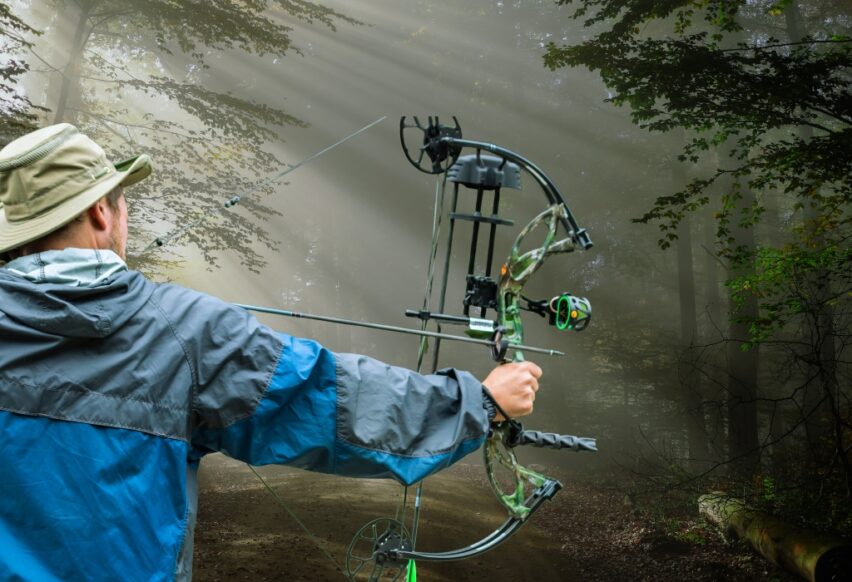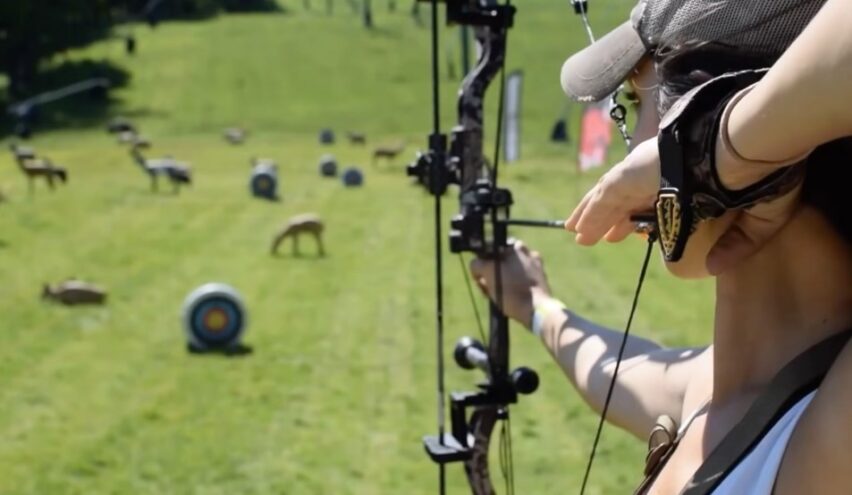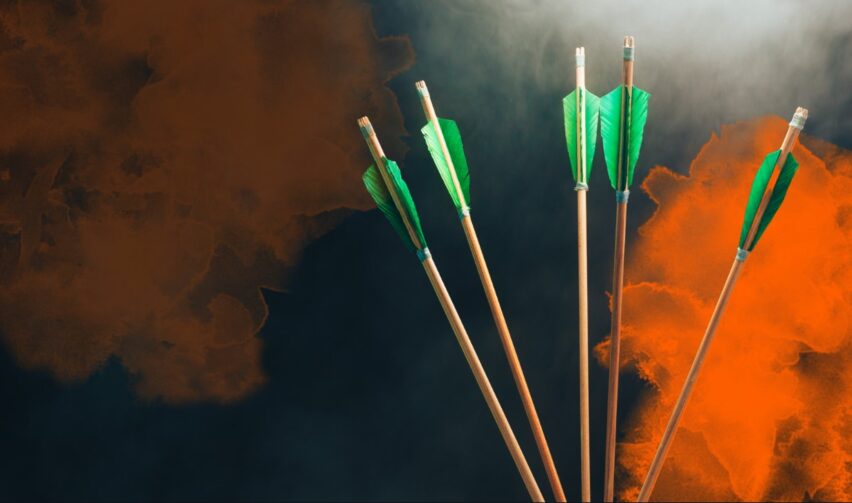An arrow, as simple as it may seem, plays an instrumental role in archery. Arrow selection is a crucial part of achieving the best performance and accuracy with your compound bow. A correct arrow complements your shooting skills, improving flight trajectory and pinpoint accuracy. Yet, choosing the right arrows is often a complex task that requires a good understanding of various factors. This comprehensive guide aims to walk you through the essentials of arrow selection, from understanding its components to budget considerations and testing techniques.
Understanding Arrow Components
An arrow consists of key parts: shaft, nock, fletching, and point. The shaft, available in various materials and lengths, forms the arrow’s core. The nock, attached to the end, connects it to the bowstring. Fletching, traditionally feather-based but now often plastic, stabilizes the arrow in flight. The point, positioned at the front, ensures effective penetration. These components affect its performance.
The shaft’s material and stiffness impact accuracy and speed, while the point’s shape and weight determine penetration levels. Understanding each part’s role is crucial when selecting arrows for your compound bow.
Determining to Draw Length and Draw Weight

Your draw length and draw weight are important determinants of the kind of arrow that’s best suited for you. The draw length refers to the distance from the bowstring’s resting position to its full-draw position, and it helps determine the optimal arrow length.
On the other hand, draw weight is the force needed to pull the bowstring to full draw, which influences the ideal arrow spine, or stiffness. To measure your draw length accurately, stand with your arms extended out on either side, then measure the distance from fingertip to fingertip and divide it by 2.5. For draw weight, it’s best to test various bow weights to determine what feels comfortable and controllable.
Arrow Spine and Stiffness
Spine or stiffness refers to the arrow’s resistance to bending. It plays a critical role in determining your arrow’s flight path and accuracy. One that’s too stiff won’t flex enough, while one that’s too flexible might deviate from its intended trajectory. The ideal spine depends on your compound bow’s draw length, draw weight, and the type of bow you’re using. Most manufacturers provide spine selection charts that take these factors into account, helping you choose the right ones for your compound bow.
Arrow Length and Weight
Length and weight also impact your arrow’s flight and accuracy. The length should correspond with your draw length to provide a safe and effective shooting experience. Meanwhile, its weight influences the speed and kinetic energy. The rule of thumb is to choose arrows with a weight of 5-6 grains per pound of your bow’s draw weight for target shooting, and 6-8 grains per pound for hunting. The chosen arrow’s length should be slightly longer than your draw length, allowing for safe clearance.
Arrow Material Options
It comes in different materials, each offering distinct advantages and disadvantages. Aluminum ones are durable, straight, and cost-effective but tend to be heavier. Carbon arrows are lighter, allowing for faster speeds and greater flatness of trajectory, but they can be more expensive.
Wooden ones, while traditional and aesthetically pleasing, are less durable and consistent than the other two. Your choice of material depends on your shooting requirements and budget. If speed and accuracy are your priority, carbon ones might be your best bet. However, if you’re a beginner or working within a budget, aluminum arrows are a good choice.
Choosing Arrow Points

There are different types of arrow points, each suitable for specific applications. Broadheads are used for hunting due to their lethal impact, while field points are ideal for target shooting because they cause minimal damage to the targets.
When choosing arrow points, consider your purpose are you hunting or target shooting? Broadheads should be chosen based on the game size, while field points should align with the weight of your broadheads for practice consistency.
Selecting Nocks and Fletchings
A properly selected nock ensures a secure fit on the bowstring, preventing the premature release and promoting consistent shooting. The nock type depends on your compound bow, with some bows requiring specific nock designs. Fletchings, on the other hand, stabilize the arrow during flight.
Their shape, size, and material affect the arrow’s flight characteristics. Larger fletchings provide more stability but also more air resistance, slowing it down. Smaller fletchings do the opposite. Your choice of fletchings should balance stability and speed.
Considering Bow Speed and Kinetic Energy

Bow speed and kinetic energy have a significant impact on their selection. Faster bow speeds require stiffer ones, while higher kinetic energy, necessary for hunting, requires heavier arrows. To optimize performance, select arrows that match your bow’s speed and the kinetic energy you aim to achieve. For example, for hunting large games, you might need heavier, stiffer arrows that deliver high kinetic energy.
Budget Considerations
Choosing the right arrow for your compound bow doesn’t mean you have to break the bank. Balance quality and budget by first identifying what you need in an arrow and then comparing different brands and models. Aluminum ones, for instance, are durable and affordable, making them an excellent choice for beginners. Carbon types are pricier but offer superior speed and flatness of trajectory, justifying the cost for serious archers.
Tips for Testing and Fine-Tuning Arrows

Testing and fine-tuning your arrows can significantly improve your shooting performance. Paper tuning, where you shoot through a paper sheet to analyze tear patterns, can help you adjust the spine, point weight, and fletching alignment.
Also, consider testing different weights and lengths to determine what feels best for you. Remember, the ideal arrow is one that complements your shooting style and the specific requirements of your compound bow.
FAQs
What should I consider when selecting nocks and fletchings?
When selecting nocks, ensure they fit securely on your bowstring. Your choice of fletchings should balance stability and speed. Larger fletchings provide more stability but slow the arrow down due to increased air resistance, while smaller fletchings offer less air resistance and more speed.
How do bow speed and kinetic energy influence arrow selection?
Bow speed and kinetic energy significantly impact arrow selection. Bows with higher speeds generally require stiffer ones, while higher kinetic energy (required for hunting) demands heavier arrows.
How can I balance quality and budget when selecting arrows?
Start by identifying your needs in an arrow, then compare different brands and models within your budget range. Aluminum ones are a cost-effective option for beginners, while carbon arrows, though pricier, may be worth the investment for more serious archers.
What is paper tuning?
Paper tuning is a technique where you shoot an arrow through a sheet of paper to analyze the tear pattern. This pattern can help you adjust factors like arrow spine, point weight, and fletching alignment for better performance.
Can I use the same arrows for hunting and target shooting?
While you can technically use the same ones for hunting and target shooting, it’s generally recommended to use different ones. Broadheads are ideal for hunting due to their damage potential, while field points are better for target shooting due to their minimal target damage.
What is the recommended arrow weight for target shooting and hunting?
For target shooting, it’s recommended to choose ones with a weight of 5-6 grains per pound of your bow’s draw weight. For hunting, heavier ones of 6-8 grains per pound are advisable.
Why is the choice of arrow material important?
The material of the arrow impacts its flight characteristics and durability. Aluminum arrows are durable and affordable, while carbon arrows offer superior speed and trajectory. The choice depends on your specific requirements and budget.
Conclusion
Choosing the right arrows for a compound bow is a complex but rewarding process. By understanding the different components of an arrow and how factors like draw length, draw weight, arrow material, and point type impact performance, you can make an informed choice that elevates your archery experience.

